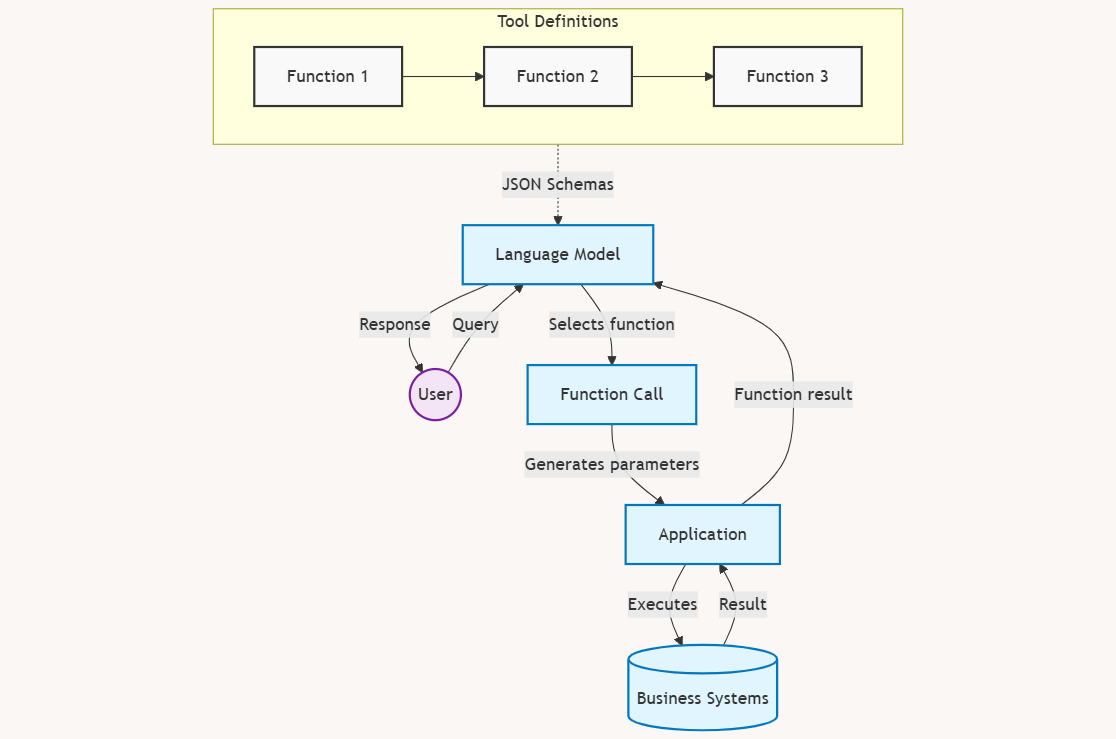Text to Action: AI That Gets Things Done

Beyond Conversations: AI in Action
The true power of AI lies not just in its conversational abilities but in its execution. At Superp.ai, we adopt a forward-thinking approach: text to action. By directly connecting AI with business systems, it goes beyond advising to executing concrete actions.
This isn’t a futuristic vision. Our text to action systems have been in production for over a year with several clients, generating quotes and processing documents daily—directly within core systems.
Text to Action: AI That Gets Things Done
Text to action technology enables AI not only to communicate but also to perform tasks directly within business systems. Instead of merely making suggestions, the system takes action when necessary.
How Does Text to Action Work Technically?
A text to action implementation revolves around the concept of function calling: the ability of a language model to invoke specific functions. This is achieved by defining functions as “tools” the model can utilize. Each function is described using a JSON schema that precisely specifies the required parameters and their types (e.g., strings, numbers, or specific formats like dates).
The process involves three steps:
- The model analyzes the user request and determines which function is needed.
- It generates the appropriate parameters based on the schema.
- The application captures the function call and executes it using these parameters. The result is then returned to the model, which uses the output to determine the next response or action.
This cycle can repeat within a single conversation, enabling complex workflows.
In Practice: Wens Travel’s Success Story
Our text to action solution has been running successfully at Wens Travel for over a year. Their AI assistant has not only transformed travel planning but also automates quote generation—a previously labor-intensive process. The system automatically searches historical travel data, creates new itineraries, and generates complete quotes based on client specifications. All necessary objects are created directly within the system, ensuring data validation for consistency. Prices and availability are updated automatically.
This approach is fundamentally different from traditional AI implementations, where AI merely provides suggestions that require manual processing.
Business Impact: Beyond Conversations
Integrating text to action functionality has far-reaching implications for business processes. Direct integration with core systems significantly reduces manual tasks. For instance, at Wens Travel, planning processes are now significantly faster, accuracy has increased through automated validation, and data input consistency has improved. As a result, employees have more time to focus on value-added activities.
These benefits are not limited to the travel industry. We see similar outcomes in various sectors where text to action is implemented.
Getting Started with Text to Action
Begin by identifying processes that involve substantial manual data entry, follow standardized workflows, and benefit from rapid processing. Start with analyzing current processes, identifying automation opportunities, and defining desired functionalities. Launch a pilot project and scale successful solutions.
Text to action technology is evolving rapidly. Future advancements promise smarter process automation, enhanced context awareness, and broader integration capabilities for further business process optimization.
Conclusion
Text to action represents the next phase in AI implementation for businesses. By enabling AI to act rather than just converse, genuine process improvements become achievable. The successful implementation at organizations like Wens Travel demonstrates that this technology already delivers tangible value.
Curious about how text to action could benefit your organization? Contact Superp.ai for a demonstration of how this technology can transform your business processes.
